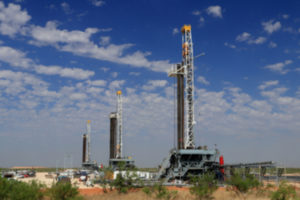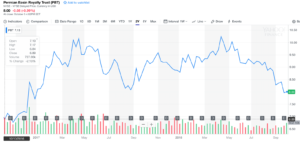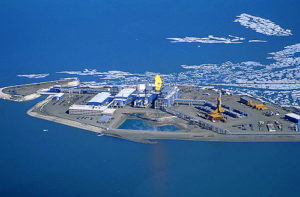Dear PGM Capital Blog readers,
In this weekend blog article, we want to take the opportunity to discuss with you, why investing in Royalty Trust Corporations, can be lucrative for Income investors.
INTRODUCTION:
A royalty trust is a type of corporation, (mostly in the United States or Canada) which typically own oil or natural gas wells, the mineral rights of wells, or mineral rights on other types of properties.
An outside company must perform the actual operation of the oil or gas field, or mine, and the trust itself, in the United States, may have no employees.
However, unlike most corporations, its profits are not taxed at the corporate level provided a certain high percentage (e.g. 90%) of profits are distributed to shareholders as dividends. The paid dividends are then taxed as personal income.
These Royalty trust companies often attract investors with their relatively high yields.
However, their distributions are dependent on the prices of oil and gas. Thus, unlike traditional stocks (who, when declaring a dividend, usually maintain it at the same amount for each quarter of the year), the dividend payout of a Royalty Trust will differ each time they declare it.
Shares of the trust generally trade on the public stock markets, but the trust itself is typically overseen by a trust officer in a bank.
SOME ATTRACTIVE ROYALTY TRUST COMPANIES:
Permian Basin Royalty Trust:
The Permian Basin Royalty Trust (NYSE: PBT) is a United States oil and natural gas royalty trust based in Dallas, Texas. With a market capitalization of US $372,000,000, it is one of the largest royalty trust in the United States. Its source of revenue is oil and gas pumped from the geologic formation for which it is named, the Permian Basin in west Texas, as well as a few locations in other parts of the state.
Permian Basin Royalty Trust came into being on November 1980, with an agreement between Southland Royalty Company and the First National Bank of Fort Worth. It pays out a monthly dividend, which is a relative rarity for U.S. stocks.
Below chart shows the performance of the shares of PBT over the past 2 years.
Based on the closing price of USD 8.00 per share on Friday, October 5th, the shares of the company had a dividend yield of 7.93%.
BP Prudhoe Bay Royalty Trust:
The BP Prudhoe Bay Royalty Trust (NYSE: BPT), founded in 1989, is a United States oil and natural gas royalty trust based in Houston, Texas. At the close of the market on Friday October 5th it had a market capitalization of US$ 783.2 million, and an average trading volume of 236,000 shares, making it the largest conventional oil and gas trust in the United States.
Its assets are in the huge Prudhoe Bay Oil Field, the largest oil field in North America. On December 31, 2017, the Trust claimed to have proved reserves of 9.070 million barrels of oil and condensate of which 9.047 million barrels are proved developed reserves; and 0.023 million barrels are proved undeveloped reserves.
BP Prudhoe Bay Royalty Trust was founded in 1989 and is based in Houston, Texas.
In their 2011 Annual Report, the Trust estimated it would continue to make royalty payouts through at least the year 2027.
Below chart shows the performance of the shares of BPT over the past 2 years.
Based on the closing price of USD 36.60 per share on Friday, October 5th the shares of the company had a dividend yield of 13.50%.
PGM CAPITAL’s COMMENTS & ANALYSIS:
Royalty Trusts are a powerful investment tool for people who wish to invest directly in extraction of petroleum or mining of other materials, but those who do not have the resources or risk tolerance to buy their own well or mine, should proceed with caution.
Additionally, since trusts often own numerous individual wells, oil fields, or mines, they represent a convenient way for the average investor to diversify investments across a number of properties.
Also, since commodities are considered a hedge against inflation, the popularity of royalty trusts as investments rises as interest rates rise, and their shares often rise as a result.
Royalty trust in the United States and Canada usually involve oil and gas fields or mines which are at or past their production peak, and will gradually decline in output as well as revenue. However since the infrastructure to develop them has already been built, an investor can expect a reasonably steady income stream.
“Pure” Bets on Commodities:
For investors who to bet on the future price appreciation of crude oil or natural gas but don’t want to get involved with the futures market, an excellent way to do that would be to buy a royalty trust that owns crude oil and gas reserves.
The value of any given trust and the distributions it pays are directly tied to the prices of the underlying commodity. Just remember the sword cuts both ways here. The trust’s income (and therefore probably the trust’s stock price) could end up falling if commodity prices go down instead of up.
Prudhoe Bay Royalty Trust Declares Q3-2018 Dividend:
On Friday October 5th, after the closing bell, BPT declared its Q3-2018, dividend as follows:
| Ex-Dividend Date: | October 15, 2018 | |||
| Record Date: | October 16, 2018 | |||
| Payable Date: | October 19, 2018 | |||
| Dividend Rate: | $1.3800962 per Unit* | |||
Based on the above we have a BUY rating on the shares of Prudhoe Bay Royalty Trust.
Disclosure:
I/We are long share holders of Prudhoe Bay Royalty Trust (NYSE BPT)
Last but not least, before taking any investment decision, always take your investment horizon and risk tolerance into consideration.
Keep in mind that share prices don’t move in a straight line. A Past Performance Is Not Indicative Of Future Results. The shares of commodities companies are interest sensitive and experience a higher volatility than the broader market.
Yours sincerely,
Eric Panneflek




